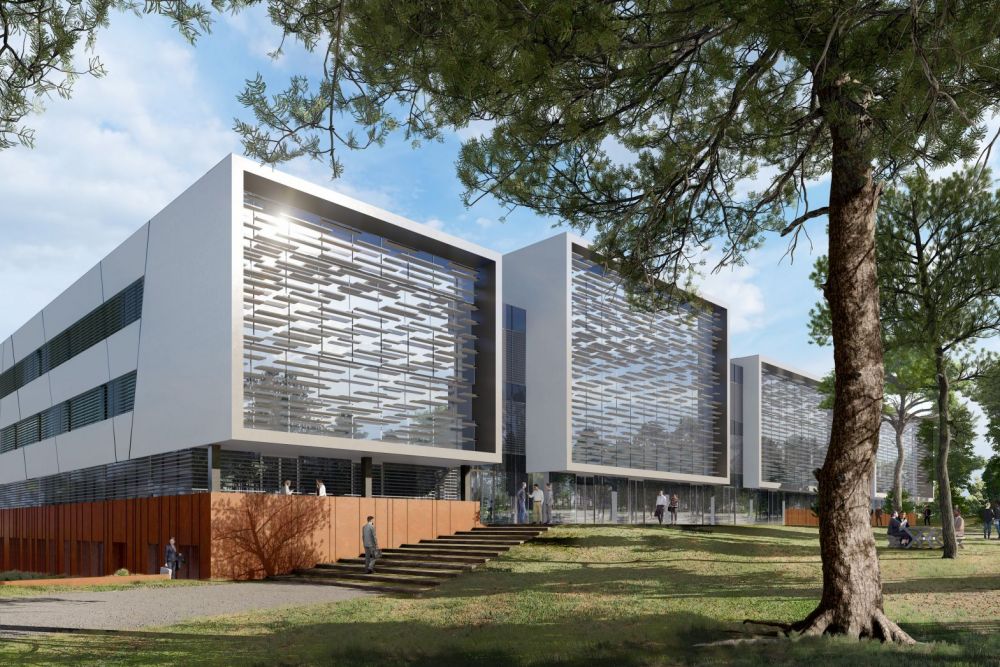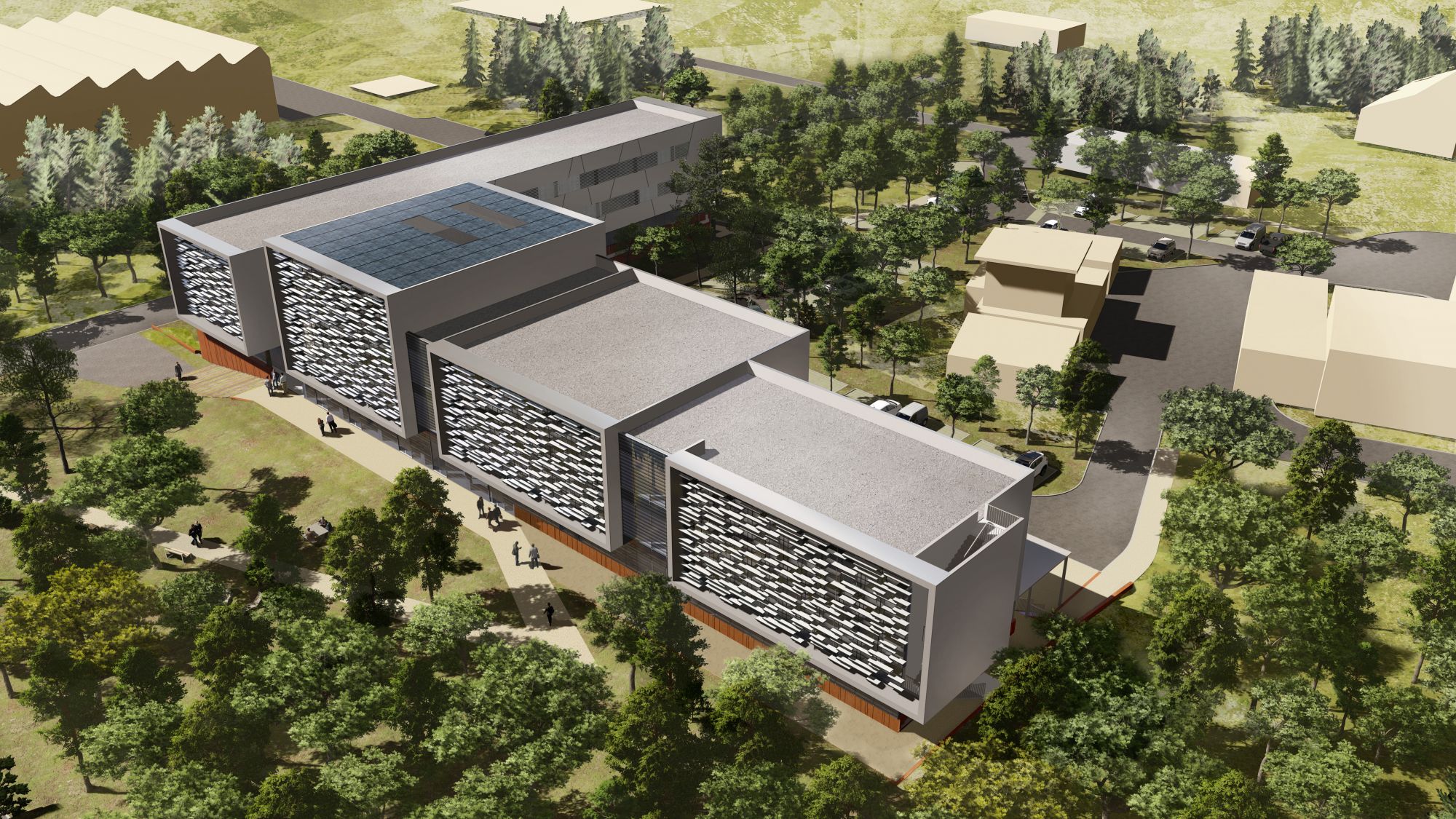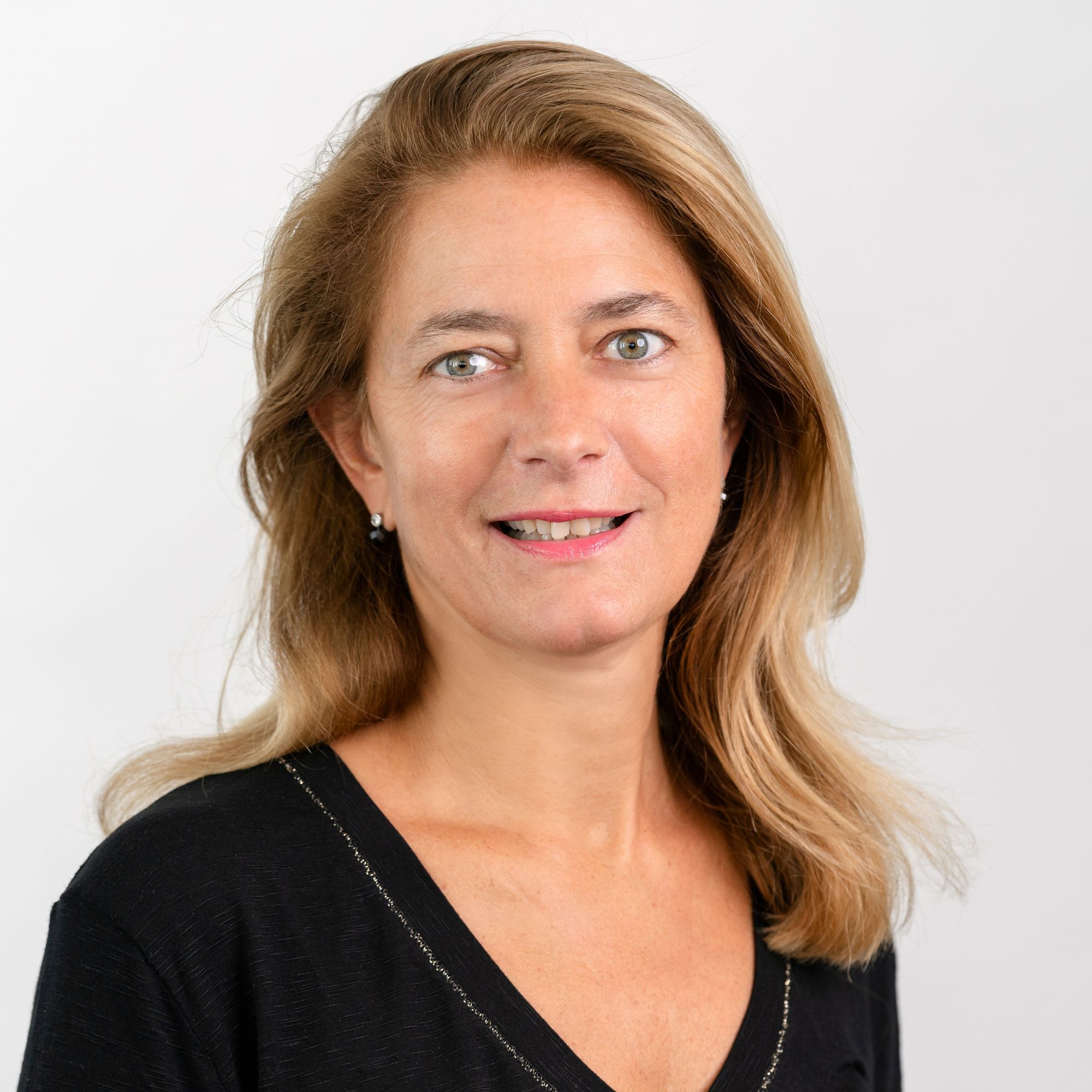- Home
- EN
- Kardham Group
- News
Kardham designes the new bioclimatic office building for IRSN
March 2022

Our Architecture and Space Design divisions will design the new office building for the Institute for Radioprotection and Nuclear Safety (IRSN), the public expert on nuclear and radiological risks.
Located on the site of the Cadarache Atomic Energy Commission (CEA) in Saint-Paul-lez-Durance in the Provence-Alpes Côte d'Azur region, the building is distinguished by its bioclimatic and HQE (High Environmental Quality) architecture, which is designed to fit into a respected environment and provide a high-quality working environment.
Intended to regroup IRSN's teams with the aim of improving performance and modernizing its real estate, the future building, consisting of two wings, will have a surface area of approximately 5,400 m², spread over four levels, one of which is partially underground.
A building in dialogue with the landscape
Kardham's teams first paid particular attention to adapting the project to the topography, climate and geography of the host site, the CEA in Cadarache, Europe's largest research and development center for low-carbon energy.
The construction is thus integrated into a pine forest made up of maritime pines 8 to 12 meters high, preserved as much as possible and which will serve as a vegetated setting for the IRSN site. The height of the roads and parking lots will also be adapted to the pine forest to preserve the existing trees.
In order to respect the topography of the site, Kardham also opted for differences in level to create an elevated forecourt, a balcony terrace, or terraces in a slope forming a natural amphitheater. By limiting the height of the building to two stories as much as possible, the overall volumetry is integrated into this exceptional wooded site and is in scale with the other buildings on the site.
The forms were designed and the colors chosen to blend into the landscape: the base, in rust-colored cladding, seeks the vibration and language of the ground, in dialogue with this Mediterranean landscape made up of pine needles and rockery, while the upper parts of the building come to discuss with the pine trees and the canopy of the trees. The vertical lines take up the inclinations of the trunks and join the shadows and multiple lines. The sunbreakers evoke the foliage in the trees to reinforce the vibration of the boxes.
A sustainable and frugal construction
The building was eco-designed to meet high expectations in terms of reducing its carbon footprint.
From the point of view of the choice of materials first of all, it demonstrates a striking constructive biodiversity: the structure, the façades and the slabs of the building are made of reinforced concrete. The glazed frames are made of aluminum and blend into the large glass openings in the shade of the sunbreakers. All the building and furnishing materials used, wood, glass, vegetation, etc. are natural and organic materials.
The building is also well thought out in terms of its orientation and its use of the sun and wind, so that it needs as little equipment as possible to maintain, heat or cool it. Thus, in order to save on operating costs and the means of implementing solar protection, the North/South orientation was favored.
Finally, the construction aims to achieve HQE " Sustainable Building " certification at the excellent level, label E3 C1, as well as a commitment to control energy consumption, in accordance with the requirements of the "France Relance" recovery plan.
A building conducive to sharing and synergies
The architectural composition of the building is based on the organization of its functions:
- A pedestal grouping the services related to the delivery spaces.
- A horizontal opening to the exterior spaces on the ground floor, creating an in-between space for shared services and reception.
- Suspended volumes floating in the pine forest hosting the offices of the research services.
The building has also been designed to offer strong centralities, true poles of exchange and conviviality:
- In the center of the building, at the intersection of its two wings, a staircase in the form of a vertical rift open to the outside, creates a link between the various departments.
- Floor polarities around common spaces: the various common functions of each floor are grouped together at the right of this vertical rift: coffee space, open archives, flexible meeting space, shared work spaces, and sanitary facilities. A privileged space in the building, this gap also benefits from a through opening onto the pine forest on both sides of the building.
User-friendly exteriors connected to the shared services of the ground floor: to the north, an entrance square offers a large shaded space for exchanges, while to the south, a large terrace offers a common outdoor space accessible from the entrance. Finally, at each gable end, the staircases are extended by terraces that open up the shared spaces to the outside.
This convivial centrality grouping together the IRSN offices also exists in its strong connection with the various buildings on the site. The entrance hall provides easy access to them. In addition, the circulation paths optimally link the outdoor parking spaces to the existing buildings. Comfortable pedestrian paths complete the site's network.
Modular workspaces co-designed with employees
The workspaces combine reflection and confidentiality with collaborative work. These common areas, for meetings, exchanges and conviviality, with open or isolated workstations in cocoons or behind claustras that make the space more intimate, are also flexible and notably equipped with partitions to follow the evolution of the departments' needs. For greater modularity, these spaces also benefit from direct natural lighting and large surfaces in the center of the building.
In terms of space design, Kardham will accompany IRSN employees through numerous workshops and interviews to help them project themselves into the functional programming and express their expectations and needs in terms of the layout of work spaces and collaborative spaces. Thanks to these co-design modules, they will be able to consider different scenarios for the positioning of common spaces, space typologies and workstations. It is also an opportunity to move from the individual dimension to the team dimension, and to discover the workspace as a whole.
In the end, the project was designed to respond to strong sustainable development issues and is part of an intelligent and benevolent logic of respect for the environment and a better quality of life at work.
TECHNICAL INFORMATIONS
- Project Owner: IRSN
- Representative: DEMATHIEU BARD CONSTRUCTION
- Partners: KARDHAM Design d’espace, MILIEU STUDIO, CET INGENIERIE, ENGIE, et ACOUSTIQUE ET CONSEIL
- Mission: MOE
- Contract amount : 15,138 M€
- Delivery: 2nd semsetre 2024


